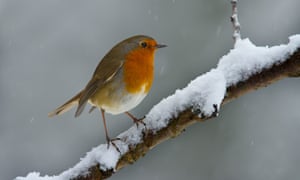AGGIE'S ADVENTURES
dog as sleuth
In my series of crime novels set in the 1950s, my detective DI Sonny Russell, has a faithful companion. Agatha Christie, Aggie for short, is a rough coated Jack Russell, closely based on my own little terrier. I have written her into the books as I think she gives Russell humanity and warmth and adds an extra dimension to the tales.
Like all 'jacks' she is curious and regularly helps her master in finding clues and leads. Here is an extract from Blood on the Tide where she finds a hidden room in an abandoned brickworks.
“Aggie!” Russell called, “come back
here!” The dog didn’t show. He called again, more forcefully this time.
“Aggie!!” She still didn’t appear so he walked round to the side of the kiln.
At first he thought the bushes and weeds had grown naturally, creating an
impenetrable barrier behind the building. Then he realised that cut brushwood
and branches had been forced into a gap. The dog must have wriggled through
somehow. He dragged some of it aside and pushed his way through the rest of the
undergrowth between the kilns and saw the dog jumping up excitedly at the door
to a small building. Reaching forward he turned the handle and the door creaked
open. He just managed to grab the terrier’s collar before she shot in. “Stay!”
he said sternly, holding up his finger. The dog sat obediently.
He peered into the room and, as his eyes
became accustomed to the weak light coming through a grimy window, he could
just make out a pair of mattresses on the floor. Looking round he could also
see a makeshift table with a primus stove, kettle, mugs, tins and packets on
it.
“Well, well,” he said quietly to himself. Then
more loudly: “Weeks, come round here, and bring a torch.”
In Blood on the Shrine an injured man has been found in a Martello Tower by a couple of boy scouts but Aggie makes a further discovery.
As the ambulance
drove off Salt spoke. ‘Do you think he was beaten up at the same time as Stump,
Sonny?’
‘Possibly.
Although that begs the question, how did he get here? Anyway, time to get back
to the station and give the Superintendent the latest news.’ Russell was just
about to get in the Wolselely when he stopped. ‘Hang on. Has anyone seen
Aggie?’ While they had been engrossed in getting the injured man and talking to
the boys she had gone off round the side of the tower.
‘Aggie!’ Russell
called. He waited but there was no sign of the terrier. ‘AGGIE!’ he shouted.
There was excited barking from the bushes. The boys ran towards the sound.
‘Uncle Sonny!
Quick. Look what we’ve found!’
When Russell
reached them they were energetically pulling branches aside to reveal Drake’s
hidden Bedford van. ‘Well I never. What have we here?’
WPC Nettie Sharpe plays an important role in my third book. In the final stages of Blood on the Strand she arrives with Aggie using her belt as a lead.
Walking nearby
Nettie Sharpe had heard raised voices and hurried to see what was going on. As
she rounded the corner, the terrier saw her master, jerked the improvised lead
out of Nettie’s hand and ran towards the group of figures.
Salle just saw a
flash of white as Aggie dashed towards her master, tail wagging furiously. He
was momentarily distracted. Russell leaped forward and made a grab for the gun.
In the confusion there was a shot – then a scream and Isobel fell to the
ground. Wickstead ran forward, flooring Salle and knocking the weapon out of
his hand. It skittered across the rough ground and disappeared over the edge of
the quay. Russell knelt down by Isobel. He could see a bloody stain flowering
on her shoulder. He pulled out his handkerchief and pressed it tightly against
the wound. With his other hand he loosened the blindfold. Isobel’s eyes were
closed and her breathing shallow. The terrier licked her face. Nettie ran
across and joined him. Wickstead had forced Salle’s arms behind his back and
clamped handcuffs on his wrists.
In the soon to be published Blood on the Cards the body of a fortune teller has vanished. Aggie is instrumental in locating it.
‘So, back to
square one for Parker.’ While the men were talking, the terrier had been
excitedly sniffing around the undergrowth - on the hunt for rabbits or rodents.
Suddenly, she stopped, head erect, nose twitching then shot off. She rocketed
across the stony track, up over the raised bank and disappeared towards the
river. ‘Aggie!’ Russell cried out. ‘Come here!’
Lewis laughed. ‘She
might not be a bloodhound but she’s got the scent of something. Let’s go and
see.’ Following the path the dog had taken the two men climbed over the bank
and down on to the flat grass along the riverside. They could just see the
terrier, tail wagging madly, nosing around the undergrowth at the side of the
river. Lewis, the more nimble of the two, reached her first.
‘What have you
found, little dog?’ He crouched and parted the reeds. ‘Well I’ll be…’ he exclaimed.
‘Aggie! Leave it!’ The terrier backed away and danced about. ‘Sonny, take a
look at this.’
If you've enjoyed these extracts all books are available in paperback or Kindle - details on the right of the blog.



















































